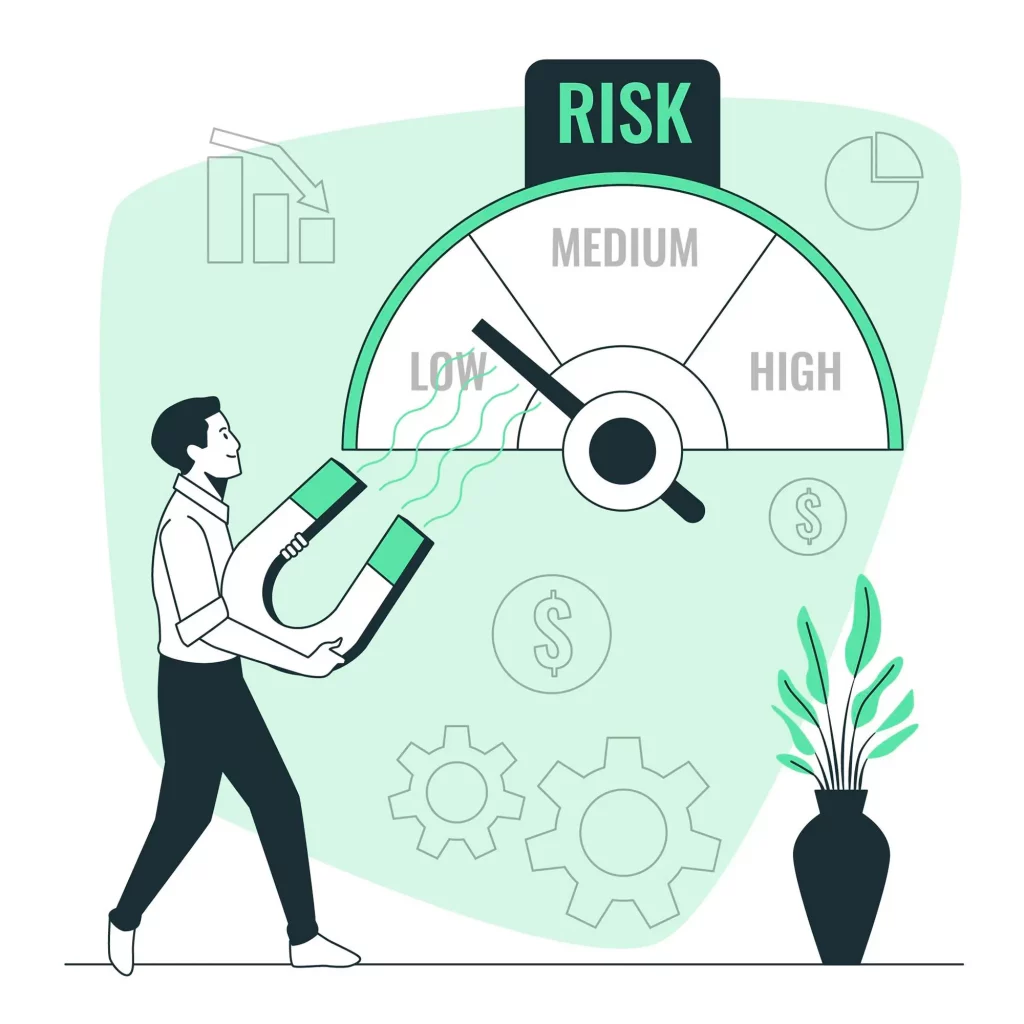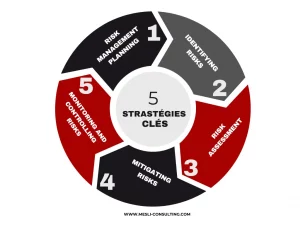5 key strategies for effectively managing project risks and uncertainties
Effective risk management is an essential aspect of project management because risks and uncertainties can have negative consequences for the project. It is therefore essential to identify them from the outset. By identifying, assessing, and managing potential risks from the outset, a project management team can greatly reduce cost and schedule impacts and increase the chances of success in achieving customer objectives. In this article, we take a closer look at these five key strategies.
What is risk management?
Risk management is a systematic process designed to identify, assess, and manage potential risks that could impede the success of a given project, organization, or activity.
Why do so few companies have organization-wide «risk managers» ?
There are several reasons why very few companies have organization-wide risk managers :
Cost
Cost is an important factor. Hiring a full-time risk manager represents a substantial financial investment for a company. The associated costs, such as salary, benefits and training, can deter companies from hiring a dedicated risk management employee.
Company size
In many small and medium-sized companies, risk management is often integrated into the responsibilities of other roles such as project managers, operational managers, or members of the executive board.
Perception of importance
The need for a fully-fledged risk manager may not be perceived as crucial or justified. Finally, some companies may not see risk management as a strategic priority or fully understand its potential benefits. They may have a more reactive view, reacting to risks only when they occur rather than anticipating and managing them proactively.
Why isn’t risk management given much consideration in projects?
Risk management is sometimes given little consideration in projects for several reasons:
Lack of awareness
Some project managers and stakeholders are not fully aware of the importance of risk management or its potential benefits. They may see risk management as an additional or optional task rather than an integral part of project management.
Time constraint
In many projects, there is strong pressure to deliver on time and on budget. This pressure can lead project teams to focus more on the rapid completion of the project than on identifying and managing potential risks.
Focus on operational management
In some cases, day-to-day operational management and urgent tasks can take precedence over risk management. Project teams might be too busy with urgent tasks to have the time or resources to fully invest in proactive risk management.
Why is risk management so important?
The main aim of risk management is to minimize the negative consequences of risks on objectives and increase the chances of successfully achieving them. It involves anticipating and taking preventive measures to avoid potential problems or implementing mitigation plans to reduce the impact and likelihood of occurrence of identified risks.
Effective risk management involves rigorous assessment to prioritize and focus on the most critical risks. It is not limited to identifying risks but also requires continuous monitoring, questioning, and adapting to changes in the project or organizational environment.
The specific objectives of risk management may vary according to the context and objectives of the project or organization, but there is generally one main objective :
- Acceptance of work within contractual deadlines: by deduction, anticipate possible disruptions, improve the quality of decisions, optimize performance, etc.
5 key strategies for effective risk management
Let’s get to the heart of the matter: What are the steps involved in effective risk management?
1- Risk management planning
The first step is to establish a solid plan for risk management from the inception phase of the project. It is essential to document all planned mitigation measures and assign responsibility for each task. It is also crucial to communicate risks transparently with stakeholders.
A detailed risk management plan must be integrated into the overall project plan, and regular monitoring mechanisms must be put in place to assess the effectiveness of mitigation measures.
2- Identifying risks
The second step is to identify all the potential risks that could affect the project. This requires an in-depth analysis of all the stakeholders involved in the project in order to identify the risks associated with each of them. It is essential to take all risks into account and establish a hierarchy.
Techniques such as SWOT (strengths, weaknesses, opportunities, and threats) analysis and checklists can be used to identify the most common risks. Creating a detailed risk register will keep track of all identified risks.
3- Risk assessment
Once the risks have been identified, it is necessary to assess their potential impact on the project as well as their probability of occurrence. This assessment will enable risks to be ranked according to their importance and urgency. Techniques such as qualitative analysis (using an impact/probability matrix) and quantitative analysis (cost and schedule analysis) can be used for a more precise risk assessment. This assessment will facilitate informed decision-making on the management of each risk.
This step is necessarily based on risk management tools such as Primavera Risk analysis or Deltek Acumen Risk.
4- Mitigating risks
Once the risks have been assessed, it’s time to develop appropriate mitigation strategies. This stage involves setting up action plans to reduce the potential impact of the identified risks.
Strategies can vary depending on the nature of the risks. There are several risk mitigation strategies, such as risk reduction, risk transfer, risk acceptance, and so on. Each strategy needs to be carefully considered and adapted to the specific needs of the project.
5- Monitoring and controlling risks
Risk management is an ongoing process that takes place throughout the project. It is crucial to constantly monitor the risks identified and the mitigation measures put in place. Risks can evolve over time, and new ones can emerge. Regular monitoring enables changes to be detected early and mitigation strategies to be modified accordingly.
To conclude…
By proactively identifying risks, assessing their potential impact, developing appropriate mitigation strategies, carefully planning risk management, and ensuring ongoing monitoring, project managers can reduce the negative impact of risks on project success.
It is important to emphasize that effective risk management must be a continuous and integrated process throughout the project.
By putting these tips into practice, project managers can deal more effectively with risk-related challenges.
Contact MESLI CONSULTING today to discuss your risk management needs and find out how we can help you achieve your goals. Don’t let risk stand in the way of your success; team up with our experts to ensure effective risk management and sustainable project success.




